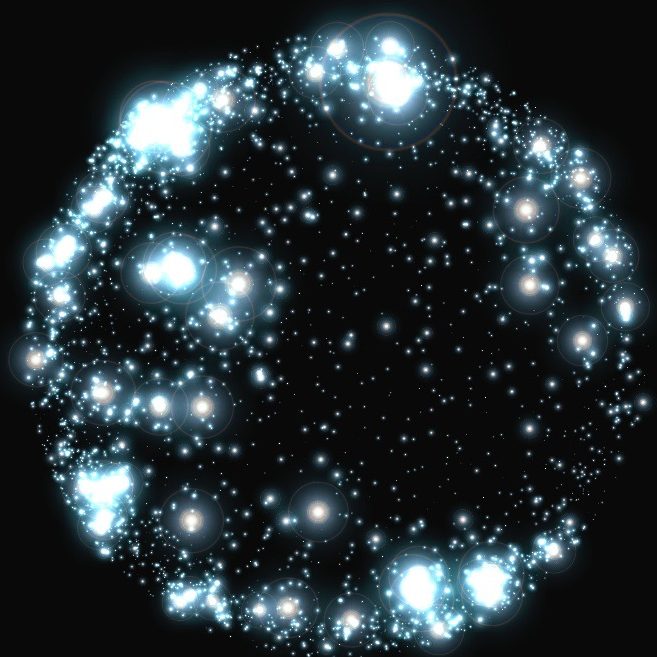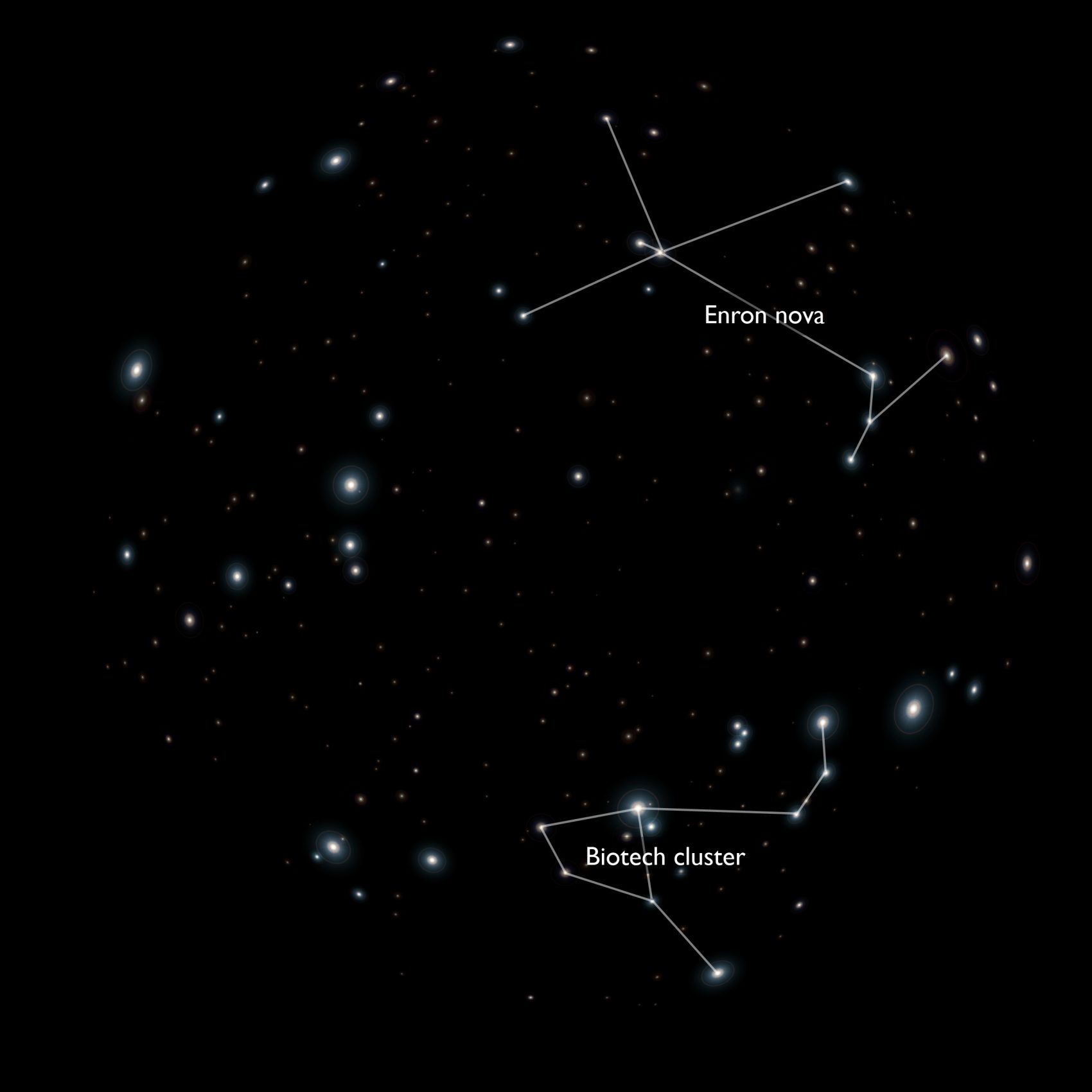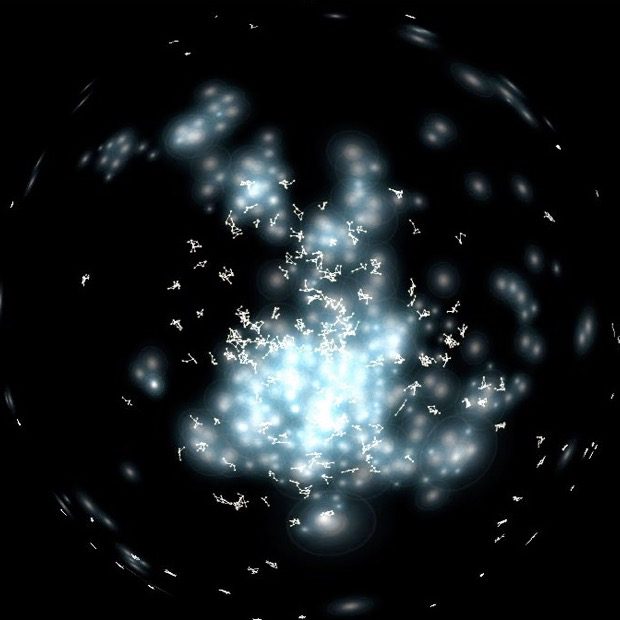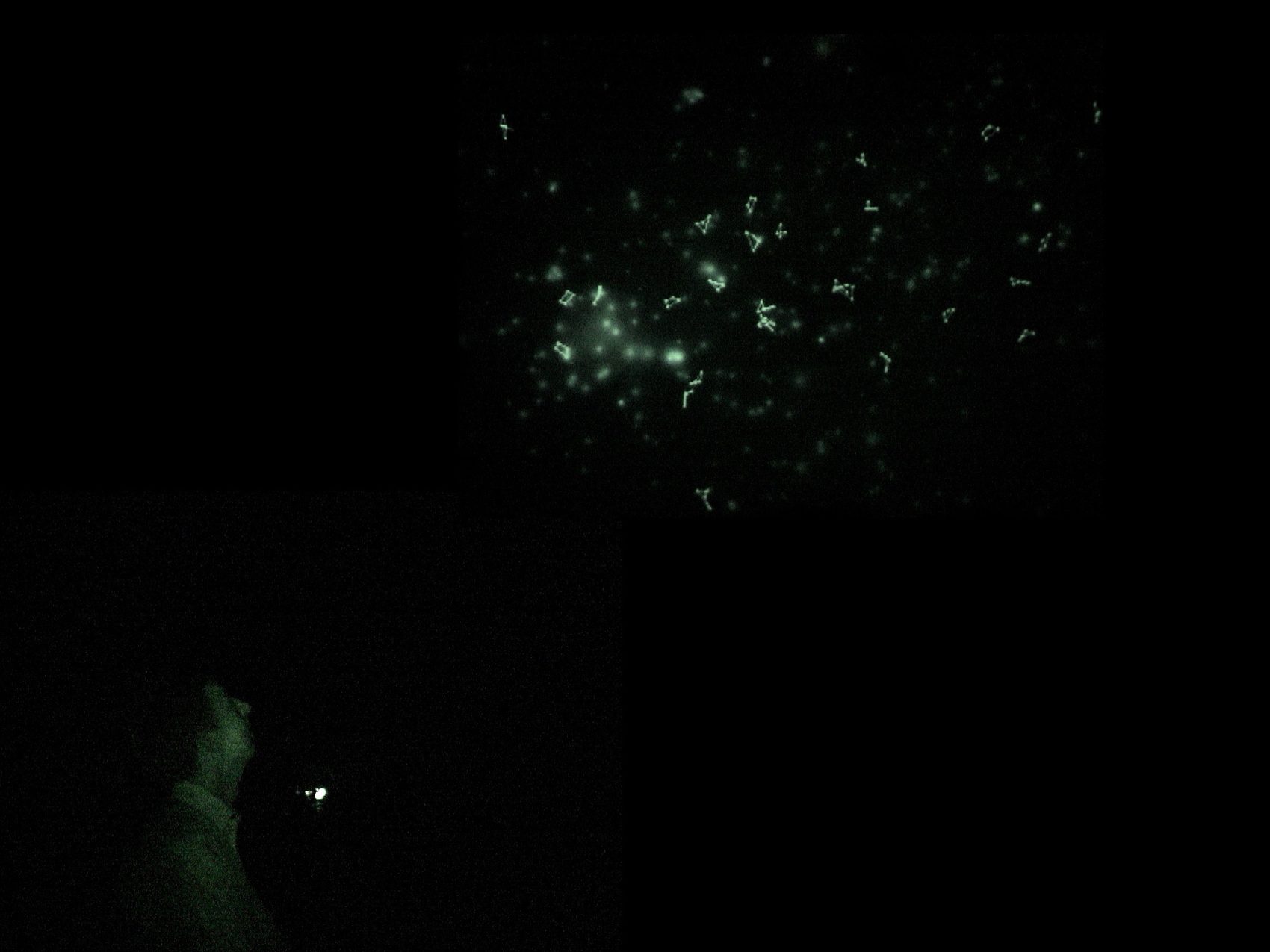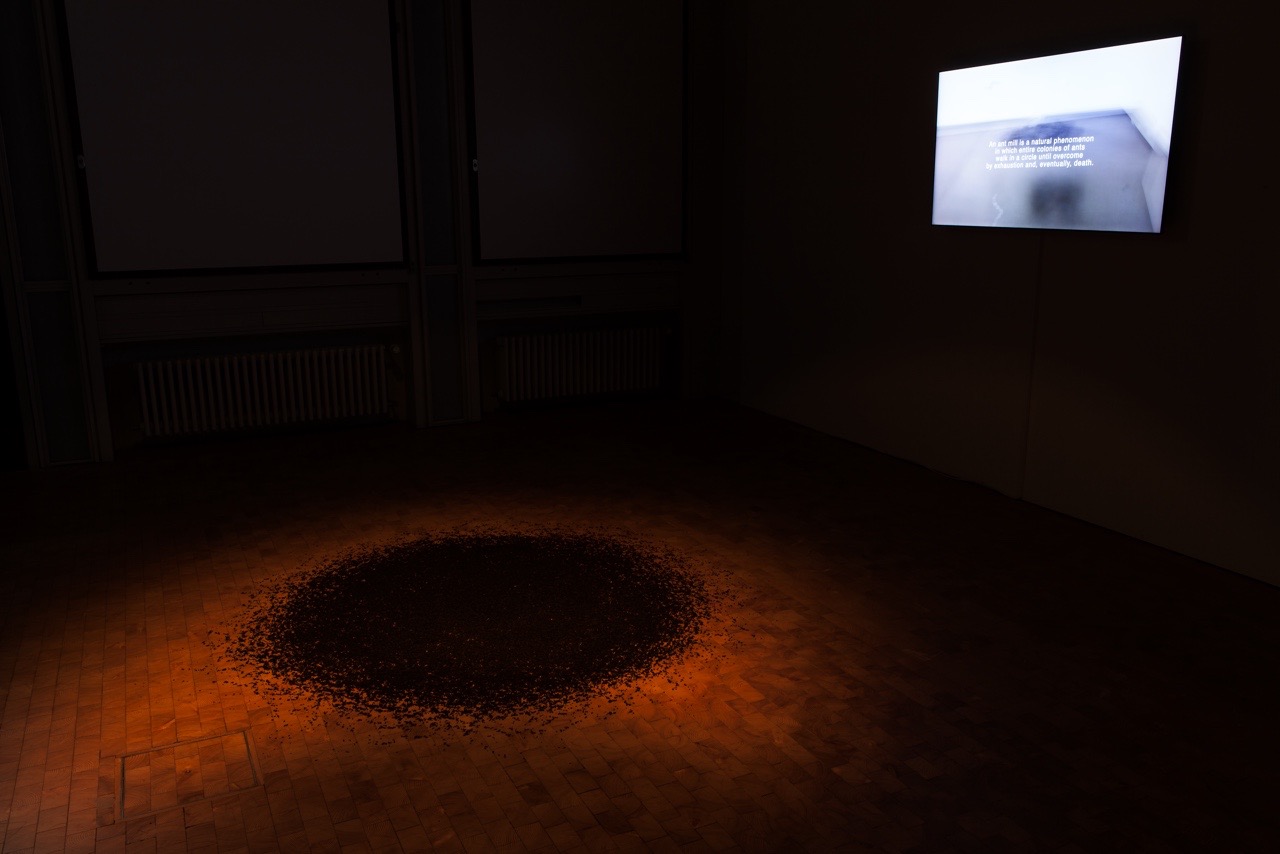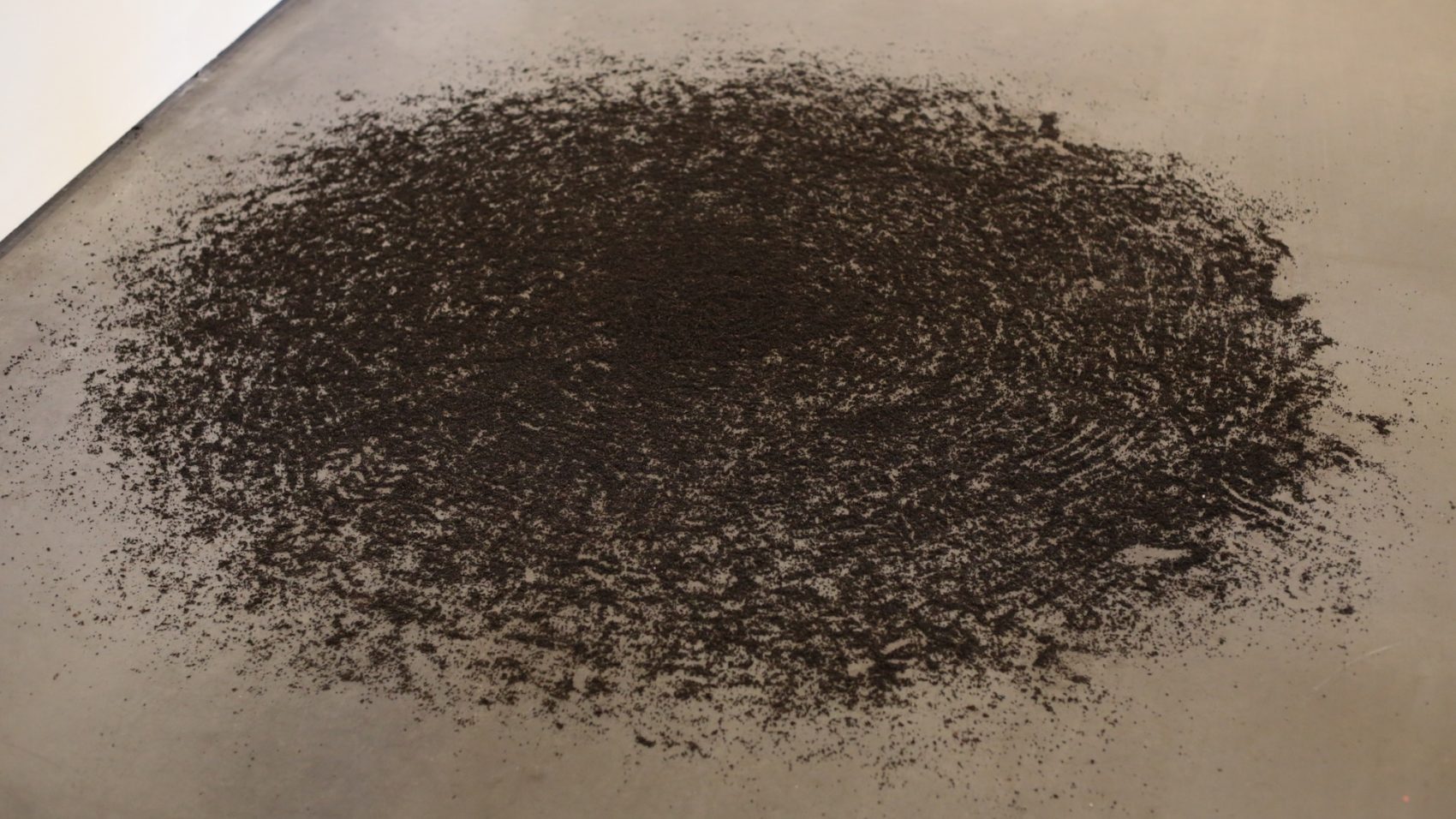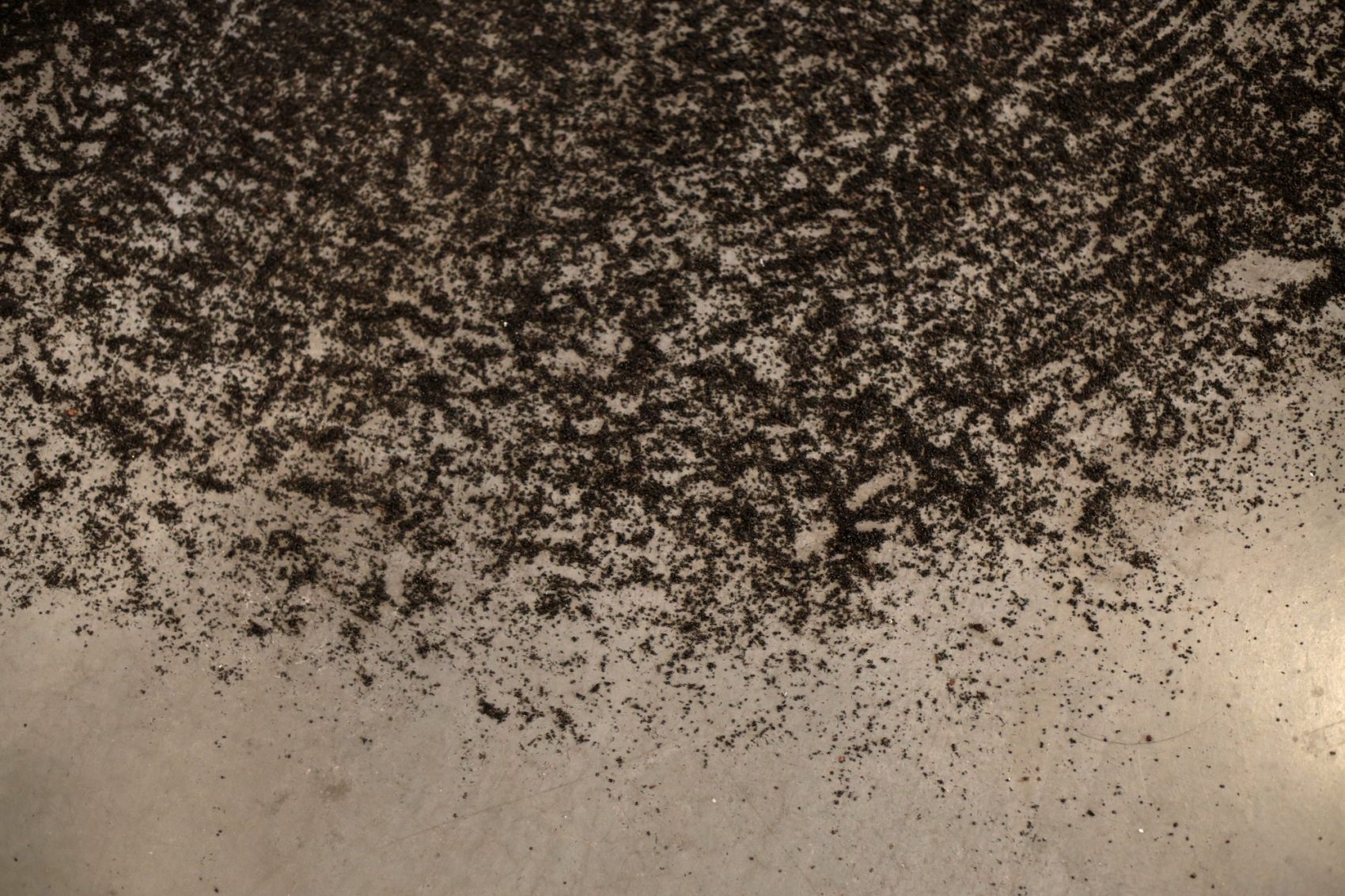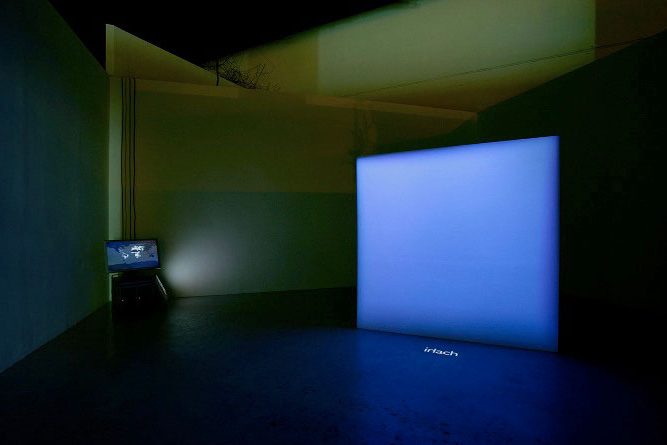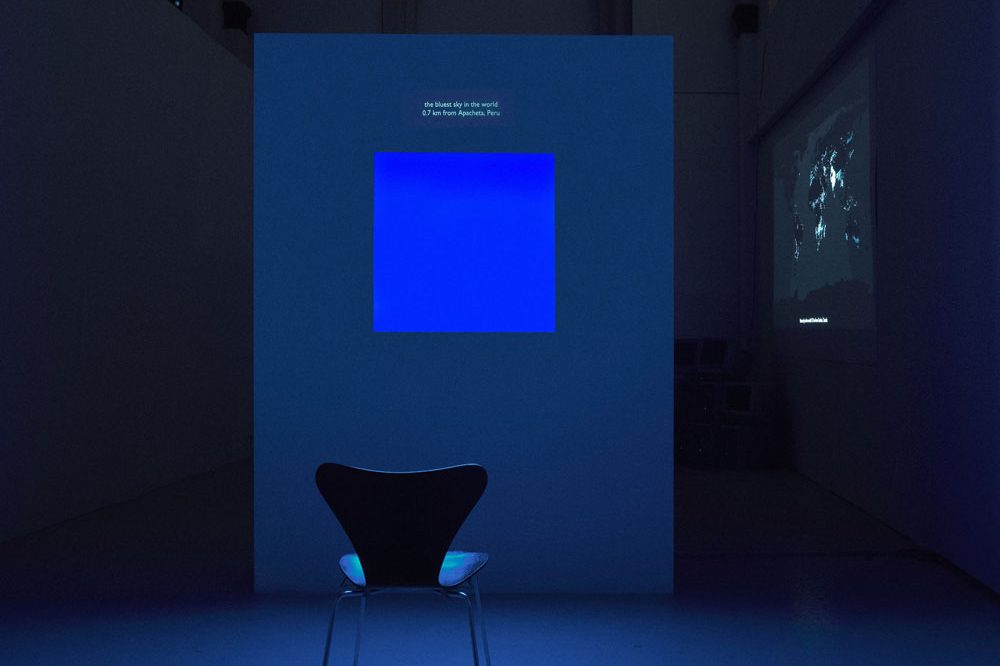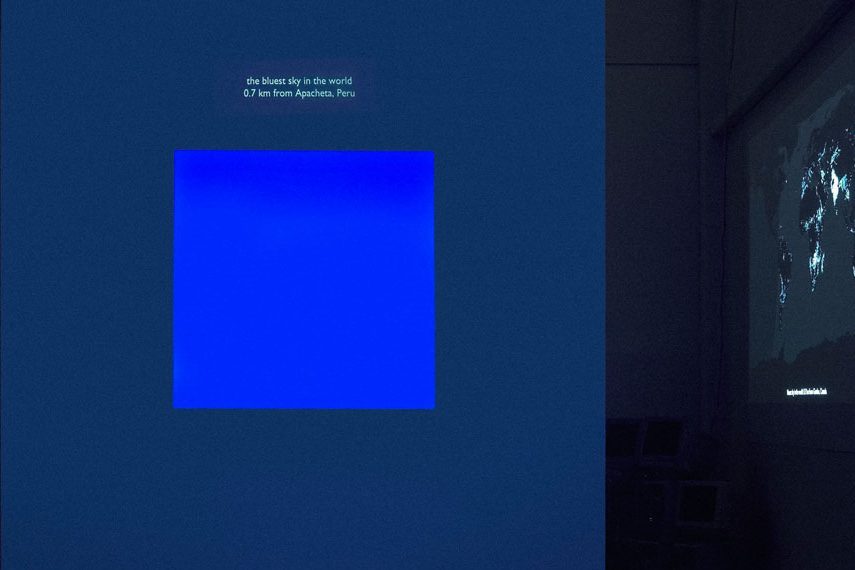AUTOGENA PROJECTS (LISE AUTOGENA AND JOSHUA PORTWAY)
FORMULATING NEW AESTHETICS FOR A DATA-SATURATED WORLD
All data lives within a frame of reference. Data is meaningless outside the system, which encodes it. When we’ve worked with data it’s always been in the service of thinking about these underlying structures and systems rather than the data itself.
Here we present three projects: UNTITLED (SUPERORGANISM), BLACK SHOALS and MOST BLUE SKIES – each of which, in their way, chronicle our changing ideas about the relationships between capitalism, nature and technology, and the ways in which we might respond to them.
BLACK SHOALS [1999, 2015] is ostensibly a visualisation of the global financial system, in which the flows of global capital are represented by a planetarium in which every star represents a company traded on the world’s stock markets. Amongst the stars live a colony of artificial life creatures who feed on the movements of capital. The project was, in part, a reaction to the naturalisation of the system of global capitalism in which the market is increasingly perceived as a mysterious force of nature rather than an artefact of culture. Since the seventies the language of complexity theory has built a bridge between biological ecologies and financial systems that has served to reinforce the legitimacy and the “naturalness” of the market. The emergence of complex behaviour from dynamic systems has become the dominant touchstone of “nature”. Adam Smith’s Invisible Hand is now recognised as a feedback property of a self-organising ecology, and this seems to position it as a comparably fundamental force
See also
BLACK SHOALS STOCK MARKET PLANETARIUM
and
We used a similar feedback effect as part of the work we produced in response to the “Monument to the Anthropocene” exhibition; UNTITLED [SUPERORGANISM]. The project was a re-creation in the gallery of an “ant mill” – a phenomenon in which hundreds of thousands of army ants lose their pheromone trail and begin to follow each other in an endlessly rotating circle until exhaustion and death.
See also
MOST BLUE SKIES is an attempt to come to some sort of peace with the very problematic idea of nature and its relationship to the technological and social systems in which we’re embedded. The project is a quixotic attempt to answer a simple childhood question – where is the bluest sky in the world? We approached the problem using the most advanced resources available to us, including satellite sensing, atmospheric modelling, real time sensor networks and radiative transfer models developed by NASA. There is an apparent paradox between the simple prelapsarian beauty of the blue sky and the disproportionate complexity of the technology we employ to try to answer the question. The work struggles to resolve this paradox in a synthesis, which hopefully emerges as a more optimistic aesthetic for a data-saturated world.
See also
